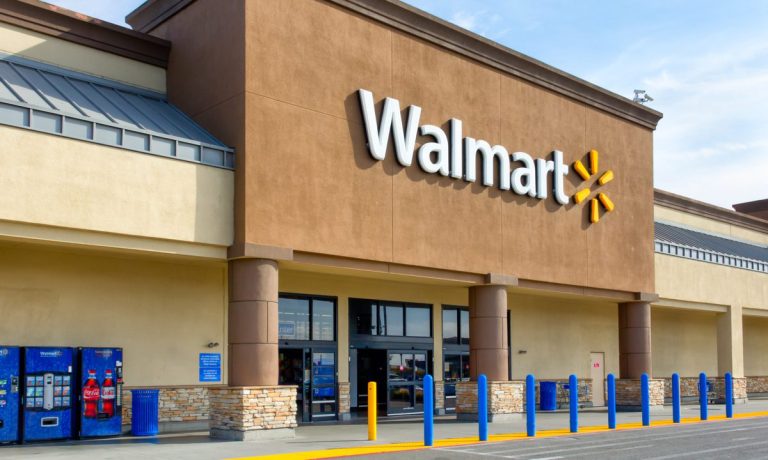As Market Stumbles, Walmart, CVS, Defensive Brands and Retailers Seize Opportunity

Since Amazon hit its recent closing high price a week before Black Friday, investors have had their biggest change of heart over high-flying shares in nearly three years, beating the stock down more than 20% and erasing over $400 billion from the online giant’s $1.5 trillion market value.
To put that two-month slump into perspective, the present decline in Amazon is larger than the entire current $388 billion market value of Walmart, which is enjoying a moment of sorts alongside a basket of other defensive retailers and brands that have found themselves in favor at a time when most everything else is not.
While short-term stock market moves are unpredictable and technically unrelated to the underlying performance of a business, they do reflect investor sentiment and expectations of what probably lies ahead.
By that measure, a murky economic outlook amid inflation running at a 40-year high of 7% and the Federal Reserve on watch for a string of interest rates increases to douse that fire, has companies that serve the basic essential needs of financially stretched shoppers getting the equivalent of a standing ovation right now from Wall Street.
Defensive Pricing Power
At a time when Amazon is suffering a bear market correction of 20%, and the S&P 500 briefly touched a 10% retreat of its own, big-cap players in the Consumer Staples Index are all up.
Among this basket of defensive advancers include retailers such as Walmart and CVS, as well as major global consumer-packaged goods (CPG) and food manufacturers like Procter and Gamble, Coca Cola and Pepsi, Mondelez and Colgate Palmolive, as well as grocery stores.
“We want to keep prices low for customers all across the business, and we’ll be the last to go up,” Walmart U.S. President and CEO John Furner said during the retailer’s third quarter earnings call Nov. 16 which, coincidentally or not, came just two days before the start of Amazon’s decline.
Read more: Walmart Leverages Scale in Grocery to Price Out Competitors
To be sure, the impact of rising costs is felt by all retailers and brands, and the ability to absorb some, or all, of that increased expense and to “invest in price” as a way to gain market share is a climate and tactic that bodes well for the biggest multinational businesses — including Amazon, whose shares are still up about 60% from the March 2020 lows, despite the recent sell-off.
Last week, Procter and Gamble announced it had raised prices in all 10 of its product categories and said that more targeted increases were coming in April, noting that consumers had — so far — taken an uncharacteristically “benign” response to higher prices on their favorite brands than they have historically done during previous bouts of inflation.
“This is not a one size fits all approach,” P&G Chief Financial Officer Andre Schulten told investors and analysts during the company’s second quarter earnings call Wednesday (Jan. 19).
See more: New Tech to Help P&G Embrace ‘Constructive Disruption’ as Inflation Drives Prices Higher
“We believe this is a temporary bottom line rough patch to grow through and not a reason to reduce investment in the business,” Schulten said, adding that the strength of P&G’s innovation pipeline and its ability to combine pricing with innovation was clearly helping it in this environment.
The pressure to get pricing right, as well as the opportunity to swipe customers from competitors during tumultuous times, are high right now. According to PYMNTS data, 35% of consumers said they would switch to a different grocer or pharmacy that had a better digital offering, while 37% of consumers said price was the single-largest determinant of where they shopped for groceries, compared to 32% that cited proximity.
Read more: Price Increases Threaten Grocery Shopper Loyalty, Data Shows